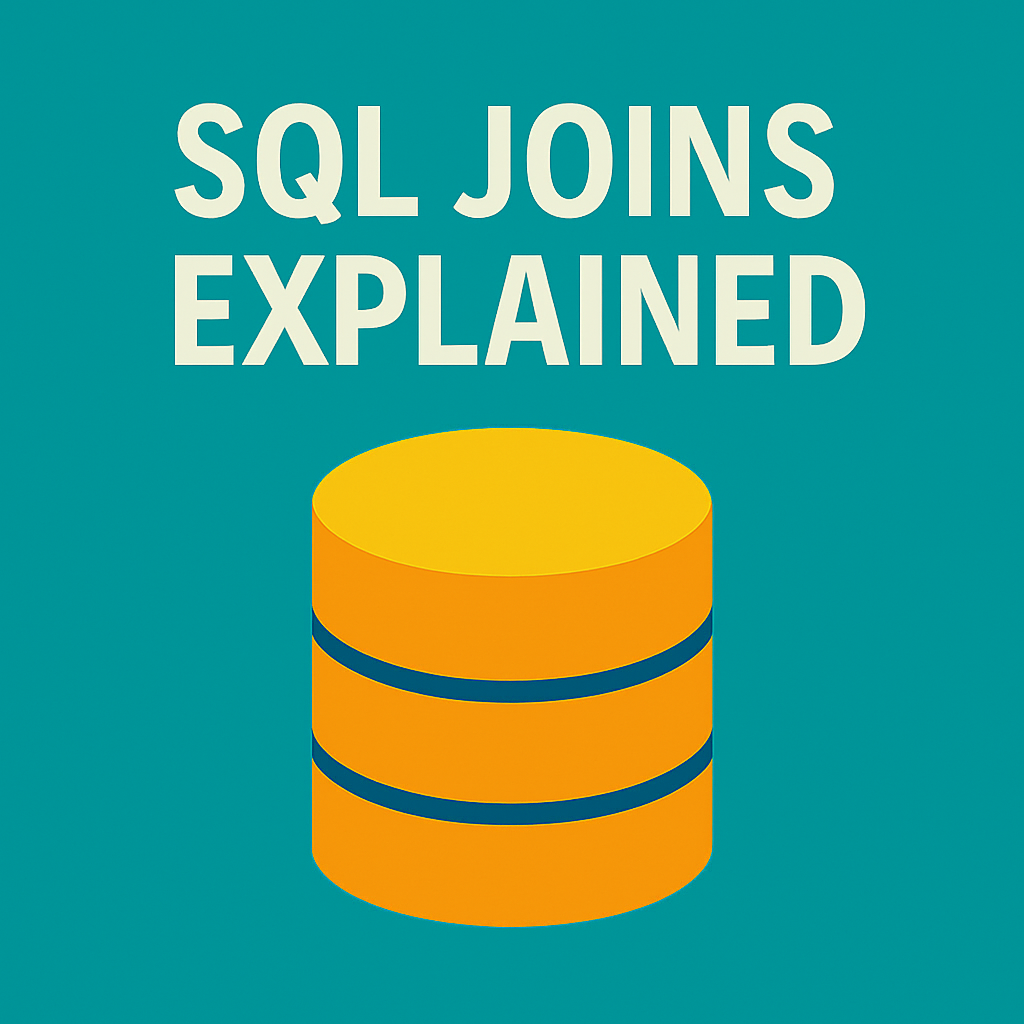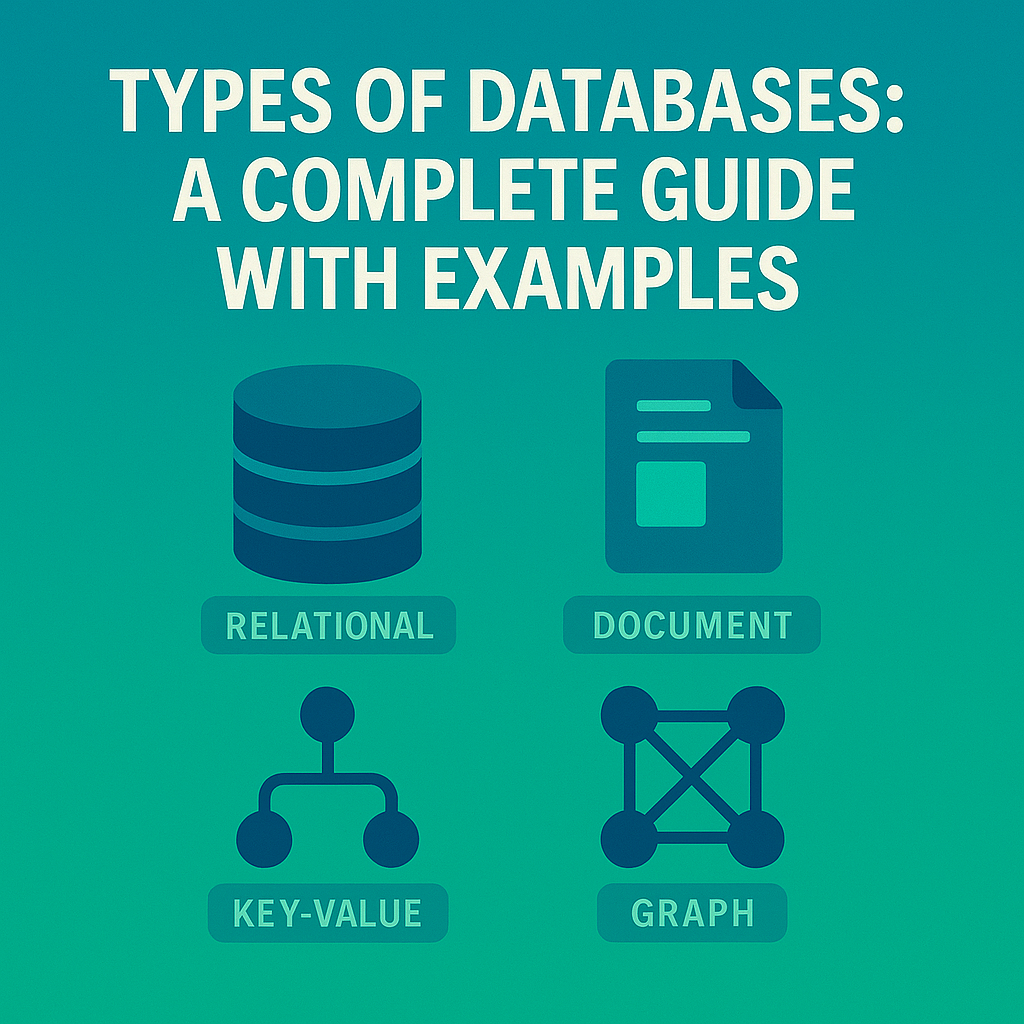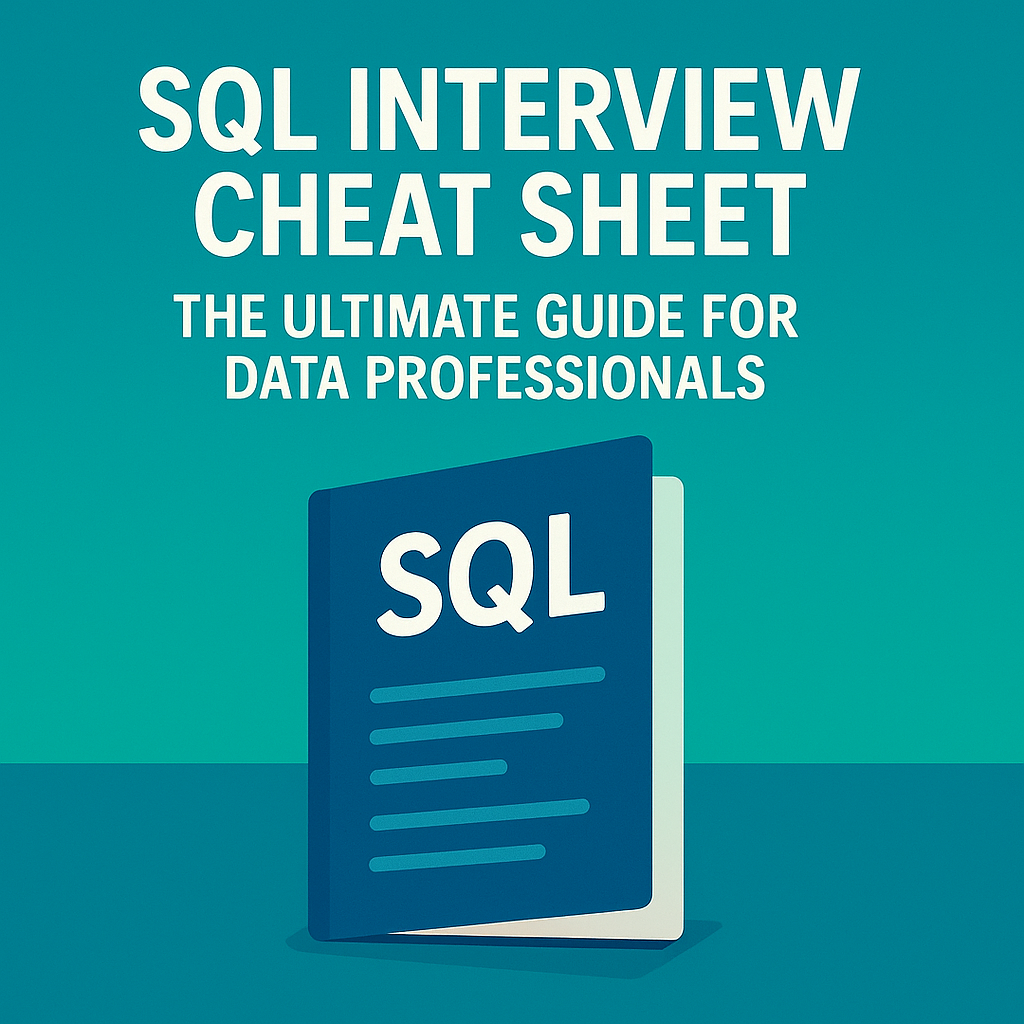
9 Major Types of Databases: Explained with Examples

Databases are the backbone of every modern application. From storing user information to powering machine learning systems, choosing the right database is critical. But not all databases are created equal — different types serve different purposes.
In this guide, we’ll explore the 9 major types of databases, how they work, and when to use them.
1. Relational Databases
Relational databases store data in structured tables made up of rows and columns. They rely on SQL (Structured Query Language) for defining, querying, and managing data. These databases enforce strong consistency and relationships between tables using keys.
Best for: Financial systems, enterprise applications, e-commerce platforms
Examples: MySQL, PostgreSQL, Oracle, SQL Server
2. NoSQL Databases
NoSQL databases are designed for unstructured or semi-structured data. They provide flexibility and scalability, making them ideal for handling massive volumes of data across distributed systems. There are several NoSQL models, including key-value, document, column-family, and graph.
Best for: Real-time apps, IoT, social networks, big data applications
Examples: MongoDB, Cassandra, Redis
3. Graph Databases
Graph databases store data as nodes (entities) and edges (relationships). They are designed to uncover patterns and connections in complex datasets.
Best for: Social networks, fraud detection, recommendation engines
Examples: Neo4j, Amazon Neptune
4. Time-Series Databases
Time-series databases are optimized for data that is tracked, monitored, or aggregated over time. They focus on speed and efficiency for inserting and querying time-stamped data.
Best for: Monitoring systems, IoT sensors, financial trading, DevOps metrics
Examples: InfluxDB, Prometheus, TimescaleDB
5. In-Memory Databases
These databases keep data in the system’s main memory (RAM) instead of disks, allowing lightning-fast access. They are often used as caches or to support high-performance, real-time applications.
Best for: Gaming, session storage, caching layers, real-time analytics
Examples: Redis, Memcached
6. Spatial Databases
Spatial databases are specialized for storing and querying geographic and spatial data like maps, coordinates, and geometry.
Best for: GIS systems, ride-sharing apps, logistics, navigation
Examples: PostGIS, MongoDB Spatial
7. Distributed Databases
In distributed databases, data is stored across multiple servers or physical locations but behaves as a single database. They offer scalability, high availability, and fault tolerance.
Best for: Cloud-native apps, global-scale services, large-scale enterprise applications
Examples: Amazon DynamoDB, Apache Cassandra
8. Blockchain Databases
Blockchain databases store data in blocks linked together using cryptography. Once written, data cannot be modified, ensuring immutability and transparency.
Best for: Cryptocurrencies, supply chain tracking, secure ledgers
Examples: BigchainDB, IBM Blockchain
9. Object-Oriented Databases
These databases store data in the form of objects, similar to how it’s represented in object-oriented programming. They allow developers to persist objects directly without translation to rows and columns.
Best for: Applications heavily relying on object-oriented programming, CAD/CAM, multimedia systems
Examples: ObjectDB, db4o
Conclusion
Each type of database is designed with a different purpose in mind. While relational databases remain the most widely used, modern applications often combine multiple types to meet diverse requirements — for example, pairing a relational database with a NoSQL or time-series database.
By understanding these 9 major types of databases, you can make better architectural choices and build systems that are both scalable and reliable.
Recommended Courses
If you want to deepen your knowledge of databases and data systems, here are some excellent courses to get started:
- IBM Data Science → https://programmingvalley.com/course/ibm-data-science-free-course/
- SQL Basics for Data Science → https://programmingvalley.com/course/sql-for-data-science-free-course/
- Meta Data Analyst Professional Certificate → https://programmingvalley.com/course/meta-data-analyst-free-course/
- Google IT Automation with Python → https://programmingvalley.com/course/google-it-automation-with-python-free-course/
- Generative AI for Data Scientists → https://programmingvalley.com/course/generative-ai-for-data-scientists-free-course/
Amr Abdelkarem
Owner




No Comments